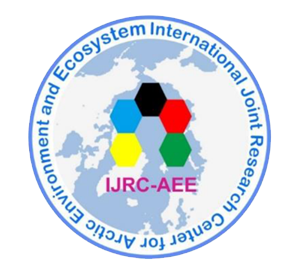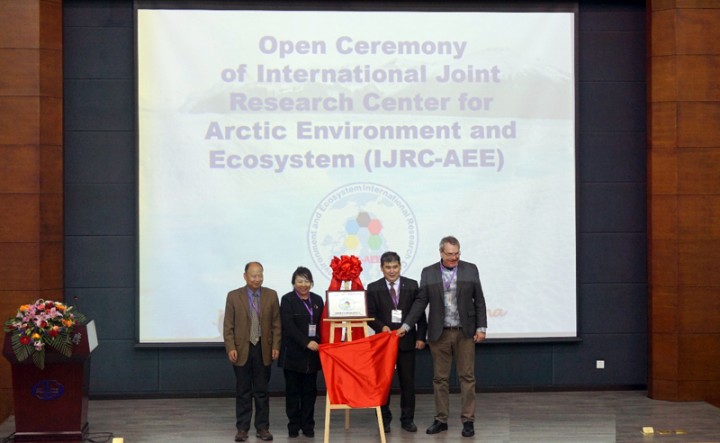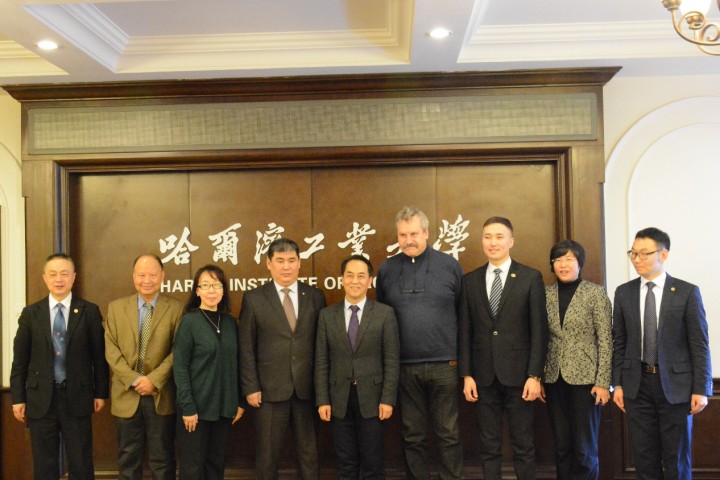In January 11, 2018, the Opening Ceremony of International Joint Research Center for Arctic Environment and Ecosystem (IJRC-AEE) was successfully held in the State Key Laboratory of Urban Water Resource and Environment (SKL-UWRE), HarbinInstitute of Technology (HIT). The nameplate of IJRC-AEE was unveiled during the Ceremony, formally announcing the establishment of IJRC-AEE, the first Arctic environmental and ecological research center in Chinese universities. The Ceremony was hosted by Prof. Yujie Feng, the Deputy Director of the SKL-UWRE. Also the attendees in the Ceremony were Prof. Yi-Fan Li, Director of the IJRC-AEE, and two Deputy Directors of IJRC-AEE, Prof. Anatoly. N. Nikolaev, the Vice Rector of North-Eastern Federal University (NEFU) of Russia, and Dr. Roland Kallenborn, a Professor of Norwegian University of Life Sciences and an Adjunct Professor of the University Centre in Svalbard, Norway.
The tasks of IJRC-AEE are to establish a world-class research center in Arctic environmental and ecological study; to foster international collaboration between China and the Arctic countries; to provide a platform for cutting edge research in the Arctic environment and ecosystem; and to build a strong capacity for training students and young scientists and promoting their ability in Arctic environmental and ecological research.
IJRC-AEE consists of 11 founding members, including 7 universities and institutes in China (Harbin Institute of Technology, Zhejiang University, Research Center for Eco-Environmental Sciences of Chinese Academy of Sciences, Jinan University, Yantai Institute of Coastal Zone Research of Chinese Academy of Sciences, Nanjing University of Information Science and Technology, and Tianjin University) and 4 universities from other countries (North-Eastern Federal University, Russia, Norwegian University of Life Sciences, Norway, University Centre in Svalbard, Norway, and Ottawa University, Canada).
Dr. Robie Macdonald, a fellow of Royal Society of Canada and a Senior research Scientist of Institute of Ocean Science, Fisheries and Oceans Canada, serves the Chairman of the International Advisory Committee (IAC) of IJRC-AEE, and the Vice Chairmen of the IAC include Mr. Lars-Otto Reiersen, the formerExecutive Secretary of Arctic Monitoring and AssessmentProgramme(AMAP) Secretariat, Dr. Anatoly N. Nikolaev, Dr. Roland Kallenborn, and Dr. Yi-Fan Li. The establishment of IJRC-AEE has been strongly supported by Prof. NanqiRen, Vice President of HIT and a member of the Chinese Academy of Engineering.
One of the main research field of the International Joint Research Center for Persistent Toxic Substances (IJRC-PTS) established in 2006 in HIT is the study of Arctic environment. In 2008-2010, IJRC-PTS became a partner of Environment Canada to work on an international Polar Year Projects, “Intercontinental Atmospheric Transport of Anthropogenic Pollutants to the Arctic (INCATPA)”. Targeted in the Arctic environment and ecological research, IJRC-PTS started a series of POPs Air and Soil Monitoring Program on large scales. Based on these programs, two fractionation concepts, the primary and secondary fractionations were suggested and a paper was published in 2010 in Environmental Science &Technology. This paper was highly appraised by an accompanying Environmental News article, saying that it is the second fractionationdriving PCBs to transport from the low latitude source region to the high latitude cold area, and eventually to the Arctic. Recently, based on a steady state theory of gas/particle (G/P) partitioning for polybrominated diphenyl ethers (PBDE) in the atmosphere established by IJRC-PTS, a prediction was made that BDE-209, like other semi-volatile organic compounds, enters the Arctic through long-range transport mainly in the form of gas. This research overthrew the popular view in the scientific community that it is the particulate BDE-209 enter the Arctic via long-range transport. This led a paper published on Environmental Science & Technology as the Head News on its home page in 2017. All these have laid a solid foundation for the establishment of IJRC-AEE.





